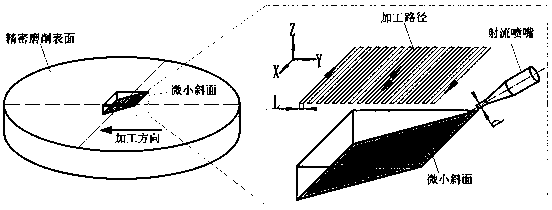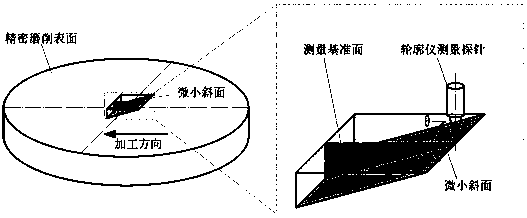Plane optical element sub surface damage detecting method
A technology for subsurface damage and optical components, which is applied in the field of ultra-precision processing and inspection, and can solve problems such as damage to optical components, unintuitive measurement results, and poor practicability of subsurface damage detection.
- Summary
- Abstract
- Description
- Claims
- Application Information
AI Technical Summary
Problems solved by technology
Method used
Image
Examples
Embodiment Construction
[0036] In order to facilitate the understanding of those skilled in the art, the present invention will be further described below in conjunction with specific embodiments and drawings.
[0037] The technical concept of the present invention is based on the following solutions, such as figure 1 Shown: The directional abrasive liquid jet is used to make the tiny bevel shown in the figure on the surface of the plane optical element that has been finely ground (that is, the aforementioned observation bevel), and then the hydrofluoric acid solution is used to corrode the tiny bevel to fully expose the edge of the optical element. The sub-surface crack layer in the direction of the inclined plane is then used to measure the contour curve of the small inclined plane with the scanning function of the profiler, and the distribution of the sub-surface cracks along the direction of the small inclined plane is obtained with the help of the micro-motion platform and clear imaging function of t...
PUM
 Login to View More
Login to View More Abstract
Description
Claims
Application Information
 Login to View More
Login to View More - R&D
- Intellectual Property
- Life Sciences
- Materials
- Tech Scout
- Unparalleled Data Quality
- Higher Quality Content
- 60% Fewer Hallucinations
Browse by: Latest US Patents, China's latest patents, Technical Efficacy Thesaurus, Application Domain, Technology Topic, Popular Technical Reports.
© 2025 PatSnap. All rights reserved.Legal|Privacy policy|Modern Slavery Act Transparency Statement|Sitemap|About US| Contact US: help@patsnap.com



